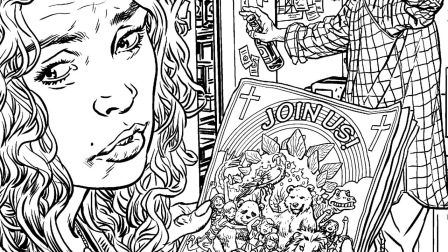Chuck Palahniuk’s Storytelling Is Spreading Beyond Books–And It’s Wonderfully Twisted
Chuck Palahniuk’s mind is a one-way depository for debauchery. Ideas, aberrant as they please, enter and never find their way out again.
“I think my greatest talent is that I have this imagination that allows me to keep all these ideas over years and years,” Palahniuk says. “For Guts, two of the stories I heard in college and one was even before college. So I ended up carrying those stories in my mind for 30 years, at least, before I heard the last detail that allowed me to put them together thematically.”
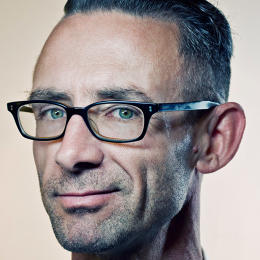
Palahniuk’s meticulous execution is leading him to territories beyond his culture-defining short stories and novels, namely a comic book sequel to Fight Club, an adult coloring book titled Bait: Off-Color Stories for You to Color, and cowriting his first screenplay for a film adaption of his 2002 novel Lullaby. Palahniuk’s decision to dissipate his brand of storytelling is an exercise in fitting content to its most efficient form, which can become a long game of waiting for that one spark to set everything in motion.
“I would love to write a play. Snuff started out as a play because it’s so entirely place-based—and it didn’t work. It was not dynamic enough, and there were things in it that no actor would really do. And parts of Haunted were originally written as a play, but I couldn’t pull it off—I just don’t have the playwriting skill,” Palahniuk says. “I know that at one point I might not have the skill to do a particular project, but the project will always be in my mind and I know that someday, something will break. I’ll meet the right person. I’ll find out the right detail, and then suddenly that thing that I could not do, I’ll be able to do it.”
As it turns out, the creative conditions proved favorable for Palahniuk’s current trio of projects—all of which have stretched his capacity for collaboration and cemented his increasingly marginalized stance on the side of transgressive fiction during an era of political correctness.
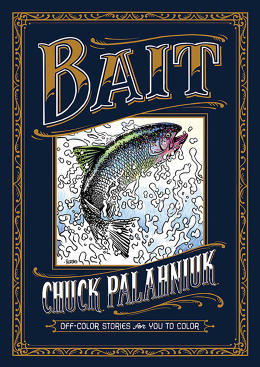
Palahniuk’s visceral prose fully utilizes a book’s potential to be a vessel for narrative misdirection and deconstructed plot lines. Translating Palahniuk’s signature style to other mediums is delicate work that Palahniuk himself admits to tackling timorously at the start.
“I had to be coached to be as bold with visuals in the coloring book and the screenplay as I am with a book, because in long-form prose, you can veil what’s happening in a lot of euphemisms,” Palahniuk says. “I didn’t have the nerve initially to depict things visually or to ask for things visually because I’m not the one executing them—I’m afraid of offending or alienating the artist. Whether it’s an actor or whether it’s the illustrator, I’m asking them to deliver a product that might be just too confronting for them.”
It’s hard to imagine the author behind some of the most unapologetically brutal subject matter in contemporary fiction would concern himself with pointing north of the moral compass. But finding yourself on what appears to be a shrinking island in the P.C. sea would give anyone pause.
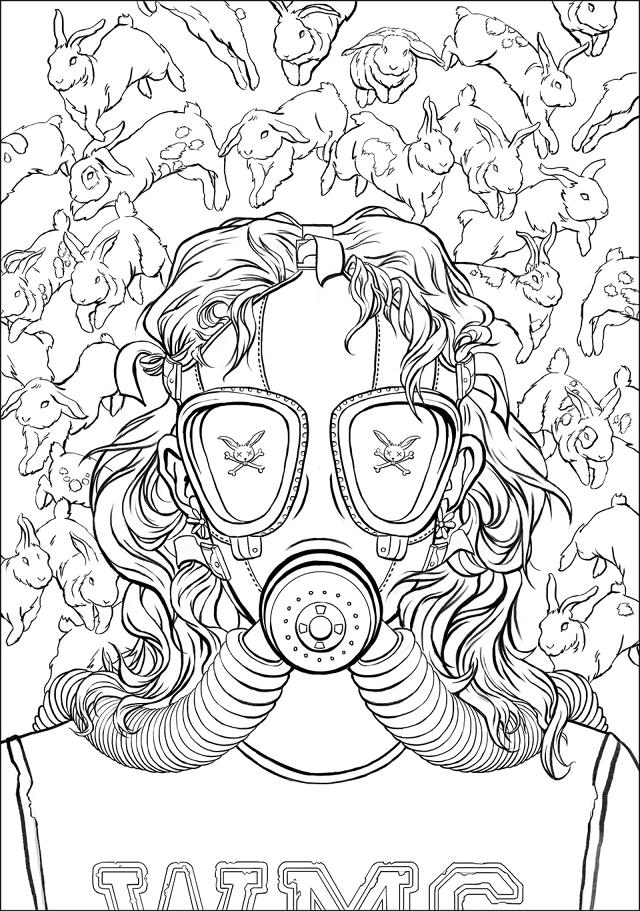
“I’ve been attending the same writing group for over 20 years, and more recently, that writing group has become fairly politically correct to a fault. I had members telling me I’m no longer allowed to use the word ‘faggot’ anymore in my work, and a bunch of other words that, I think in the right context, are fine to use. Once a workshop starts to restrict our imagination, it’s not very useful anymore,” Palahniuk says. “I don’t want to be exploitive—I don’t want to be doing it just to be provocative. I want to make sure I have a perfect defense ready if somebody objects to any aspect of [my work].”
Because the boundaries of subversiveness in the comic book world seem to be drawn in pencil and not pen, and because Kickstarter leaves artists unbeholden to powers that be, Palahniuk has found a sense of creative liberation where the checks and balances have less to do with “you can’t say that!” than with “let’s say that a little louder.”

“With the comics people, the sky’s the limit—they’ve been game for everything I’ve suggested. I’m shocked at how many things that they’ve been completely on board for,” Palahniuk says. “In Fight Club 2 the dying child soldiers who all have progeria, that is something that could be written about but to depict the characters was really a hurdle for [comic book artist] Cameron Stewart, but he met the challenge and did it very well.”
Where Palahniuk’s writing group has left off, the teams behind Fight Club 2, Bait, and Lullaby have been at the ready to pick up the slack. It’s not that Palahniuk is giving up on novels. He’s reclaiming that sense of uninhibited collaboration that’s manifesting itself in new forms.
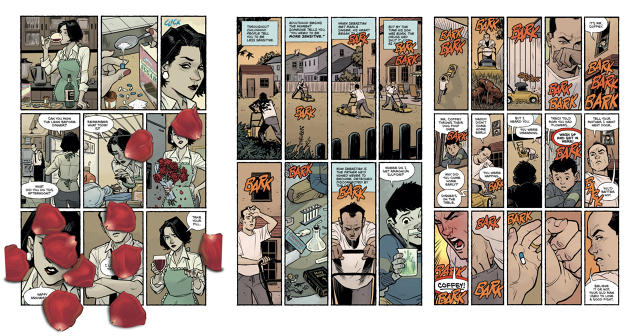
“We play off of each other to do more and more shocking things [with the coloring book]. We enable each other so that the illustration and the story both reach a place that none of us as individuals would have the nerve to take it,” Palahniuk says. “And it used to be the way it worked in our writing workshop. We kind of goaded each other to go to greater and greater extremes. But it’s been less the case lately—maybe because so many of our members are now published and successful that they might be a little timid to [be] part of something too scandalous.”
And in a preemptive strike against movie studios skirting scandal with Palahniuk’s work by stripping it clean, director Andy Mingo is putting creative control of Lullaby in the hands of himself, producer Josh Leake, and Palahniuk. After Lullaby was no longer optioned, Mingo quickly swooped in, having worked with Palahniuk before on adapting his short story Romance, and successfully funded the Kickstarter campaign to bring Lullaby to the big screen.
“When it comes to creative freedom, you have to have a certain level with a Chuck Palahniuk script,” Mingo says. “If we took a script that contain necrophilia, dead babies, and a whole variety of different things and we sold it to Hollywood, it would turn into a romantic comedy in the end. So we’re looking to maintain Chuck’s vision for this. We really need to make sure we have control over it, otherwise there’s a possibility of the story being watered down.”
Part of that control includes Palahniuk having his first-ever hand in penning a screenplay.
“There’s a tendency Chuck has to write a lot of smart, clever dialogue, and unfortunately when you get into adapting it to a film you’re going to have to go through and visualize what is this going to look like,” Mingo says. “[While cowriting the screenplay for Lullaby] he was writing comics and learning how to not be so dialogue heavy. It was a good meeting pointing between us where he was really into just getting the action down as sleek as it could be.”
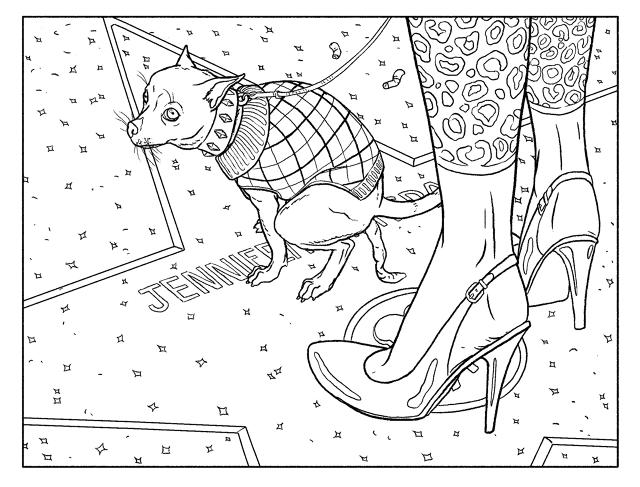
Learning how not to be too precious with words and ideas can pave a clear path toward new concepts, yet some artists may view creating-by-committee as a death knell for individuality. For Palahniuk, it’s about fortifying his personal style with resources beyond his ken.
“My background is in journalism, and that’s a constantly crowdsourced form of storytelling—where you’re always looking for a new idea, and you’re always looking for more details from the world to flesh out that idea,” Palahniuk says. “Little of it seems precious because very little of it really originates with yourself. That journalistic background has made me more open for recognizing good ideas and seizing hold of them—not wanting to waste them.”
Fast Company , Read Full Story
(29)

